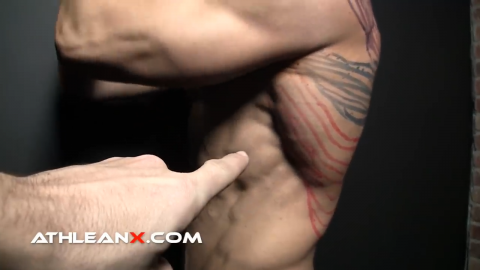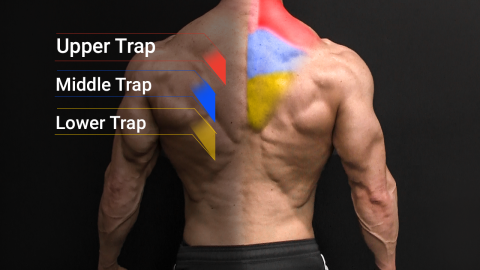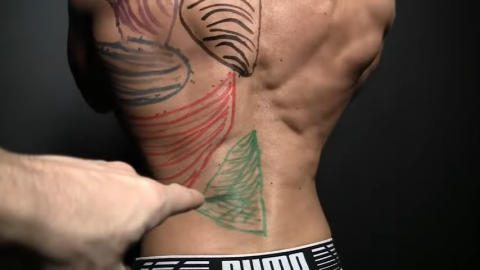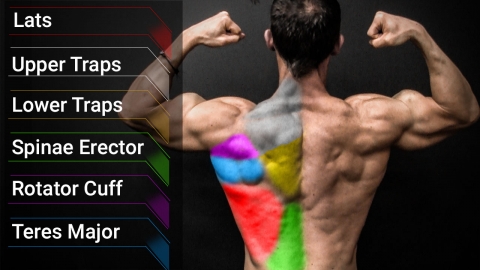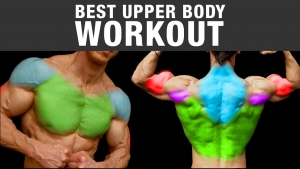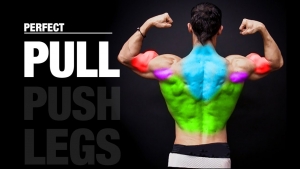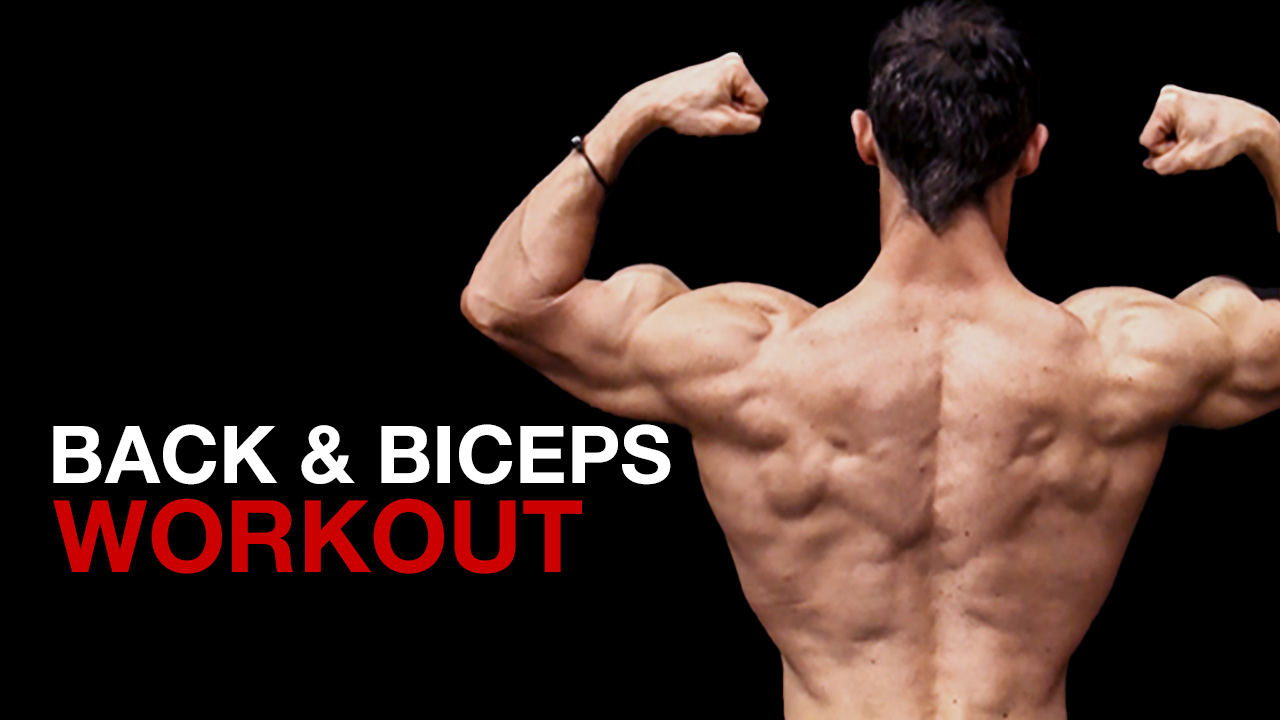
BACK AND BICEPS WORKOUT
Today, we’re going to cover a full back and biceps workout.
Right away, I know some of you are saying, “Jeff, are you really covering a Bro Split?”
Guys, a back and biceps workout routine is only a Bro Split if that’s all you’re doing.
A truly effective training split will make sure that certain complex muscle group combinations work synergistically.
This is one of those cases.
Let’s take a closer look at the anatomy of the back and biceps and how they work together.
I’ll also cover a back and biceps workout that you can start using right away.
Then we’ll wrap it up with some of the most commonly asked questions about back and bicep workouts.
ANATOMY OF THE BACK AND BICEPS MUSCLES
Before diving into the resistance exercises, let’s understand the intricate architecture of your back and biceps.
Understanding the target muscles isn’t just for the anatomy geeks. It’s crucial for optimizing each movement and maximizing muscular strength gains.
This is how you develop a strong mind-to-muscle connection.
The better that you can tap into the muscle fibers you’re working, the more intense the contraction.
This is how results happen.
Here’s a full breakdown of the back and biceps brachii muscle groups along with their functions.
LATISSIMUS DORSI
The latissimus dorsi muscles – better known as lats – are among the biggest muscles in your back, spanning a substantial portion of the lower and middle back.
These fan-shaped muscles originate from the lumbar and thoracic spine and insert onto the upper arm bone, the humerus.
When you see a well-defined back with that classic V-shape, you’re looking at well-developed lats.
The functions of the latissimus dorsi include the following:
- Shoulder Extension: When you move your arm backward, you’re activating your lats. For example, think about how your arm goes back during a Pull-Up.
- Shoulder Adduction: Moving your arm down towards the side of your body, like during a Lat Pulldown, gets the lats working.
- Internal Rotation of the Shoulder: When you rotate your arms towards the center of your body, the lats work to make this happen.
- Provides Stability: The lats play a crucial role in stabilizing the spine, especially during lifting tasks, making them vital not just for targeted back exercises but for full-body functional movements.
UPPER AND LOWER TRAPS
The trapezius muscle is a large, diamond-shaped muscle located among the middle and upper back muscles, extending to the back of the neck and down to the mid-spine.
It’s divided into three distinct regions: the upper traps, middle traps, and lower traps.
For our back and biceps training session, we’re going to focus on the upper and lower traps along with their functions.
The upper trapezius is situated at the base of the skull, spanning down the back of the neck and anchoring to the clavicle, or collar bone.
Its primary roles include facilitating the elevation of the scapula, which is the motion we recognize when we shrug our shoulders.
Additionally, it plays a key part in extending the neck, allowing us to tilt our heads backward or look upwards.
When lifting our arms above the head, it’s the upper trapezius that aids in the upward rotation of the scapula, ensuring smooth and coordinated movement.
The lower trapezius has its origins in the mid-section of the spine, specifically the thoracic area, and it stretches upward to connect with the scapula, or shoulder blade.
This muscle is instrumental in the depression of the scapula, which is the action of pulling the shoulder blades downward, counteracting the familiar shrugging motion.
It’s also responsible for scapular retraction, assisting in the act of drawing the shoulder blades closer together.
Moreover, when you lower your arm from a raised position, the lower trapezius plays a vital role in the downward rotation of the scapula, ensuring a controlled descent.
Some row variations that can target the middle of the back where the traps are include the T-Bar Row and the Chest-Supported Row.
LOW BACK / ERECTOR SPINAE
The erector spinae is a group of muscles and tendons running vertically along the entirety of the spine.
It is situated in the deep layer of the back muscles, which means it plays a huge role in postural stability.
While the erector spinae run from the base of the spine to the neck, the most important section is in the lumbar region or the low back.
The main functions of the erector spinae are:
- Spinal Extension: One of the main functions of the erector spinae is to straighten the spine and assist in returning it from a flexed (or bent forward) position.
- Lateral Flexion of the Spine: This refers to the movement of bending the spine to one side. The erector spinae on the opposite side of the bend actively work during this motion.
- Maintaining Upright Posture: The erector spinae muscles are constantly at work when you’re sitting or standing upright, as they prevent the spine from flexing forward due to the pull of gravity.
- Stabilization of the Spine: These muscles also help stabilize the spine during various movements and activities, providing a protective function and ensuring spinal health.
ROTATOR CUFF
The rotator cuff is not a single muscle. It’s actually a group of four smaller muscles and their connected tendons.
These muscles are the supraspinatus, infraspinatus, teres minor, and subscapularis.
Together, they cover the head of the humerus (the bone of the upper arm) and connect it to the shoulder blade (scapula).
Forming a cuff-like structure, the rotator cuff ensures a smooth and stable functioning of one of the most versatile joints in the human body: the shoulder joint.
Their primary responsibility is to anchor the humerus securely within the shallow socket of the scapula, ensuring the shoulder remains stable despite its vast range of motion.
Notably, the supraspinatus plays a pivotal role in the early stages of lifting the arm away from the body, while the combined efforts of the infraspinatus and teres minor enable the arm’s outward rotation.
The subscapularis muscle facilitates the arm’s inward rotation.
Additionally, as one raises their arm, the rotator cuff ensures that the humeral head remains suppressed, avoiding any potential for pinching against the shoulder blade.
TERES MAJOR
The teres major is a rounded muscle located in the upper arm and shoulder region, lying just beneath the teres minor (a rotator cuff muscle).
It starts from the bottom part of the shoulder blade and attaches to the top part of the humerus (upper arm bone).
While it’s not a part of the rotator cuff muscles, the teres major works in tandem with them, especially in movements requiring shoulder stability and strength.
The main functions of the teres major are:
- Shoulder Adduction: The teres major helps to move the arm towards the body’s midline, pulling it downward after being raised.
- Internal Rotation of the Shoulder: The muscle assists in turning the arm inward, or medially.
- Shoulder Extension: The teres major also helps in moving the arm backward, especially from a flexed position to behind the body.
BICEPS SHORT HEAD

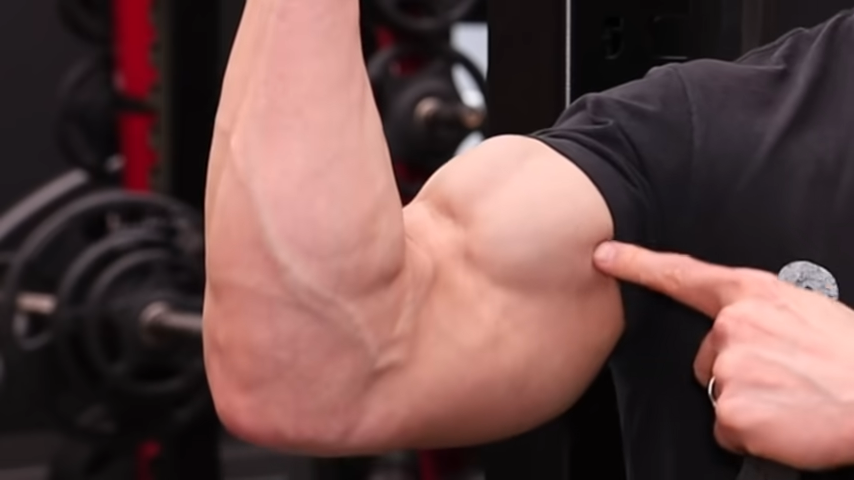
The biceps brachii muscle fibers consist of two distinct muscle bellies: the long head and the short head.
These two make up what’s regarded as the trophy muscle of the arms.
The short head of the biceps brachii is the one closer to the inside of the body and it starts from a bony bump on the shoulder blade.
Like the long head, its primary role is to help in bending the elbow, which lets you bring your forearm closer to your upper arm.
It also helps in turning the forearm to a palm-up position. This movement is called supination.
Although it’s not its main function, the short head also helps in lifting the arm forward or what’s referred to as flexing the shoulder.
BICEPS LONG HEAD

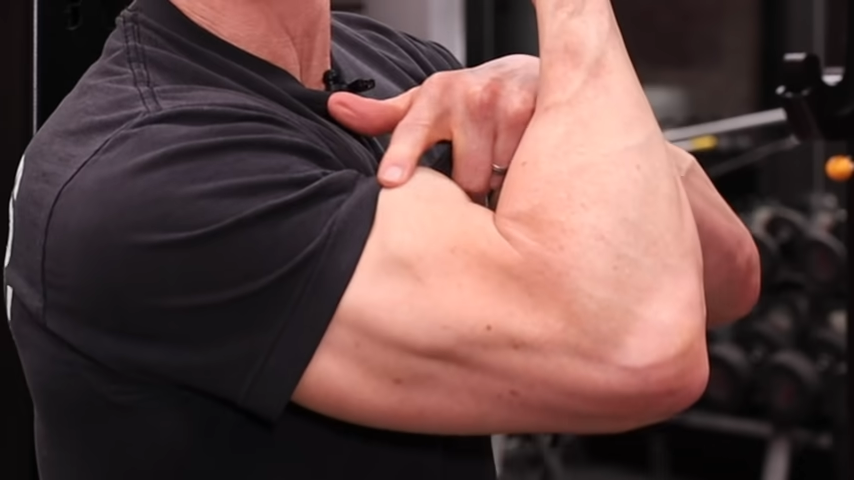
The long head of the biceps stands out as the more lateral of the two, originating from the supraglenoid tubercle of the scapula and running over the shoulder joint in its distinct bicipital groove.
Direct biceps training will target both heads of the biceps muscle with a variety of basic bicep exercises such as Preacher Curls, Bar Curls, and Cable Machine Curls, just to name a few options not mentioned below.
The main functions of the biceps are:
- Elbow Flexion: The long head contributes significantly to bending the elbow, drawing the forearm toward the upper arm.
- Supination of the Forearm: This action involves rotating the forearm into a palm-up position, and the long head plays an active role in facilitating this movement.
- Shoulder Flexion: The long head assists in elevating the arm forward, contributing to the overall motion of flexing the shoulder.
- Shoulder Joint Stability: It also offers stability to the head of the humerus, ensuring it remains seated within the shoulder socket, especially during overhead movements.
BRACHIALIS

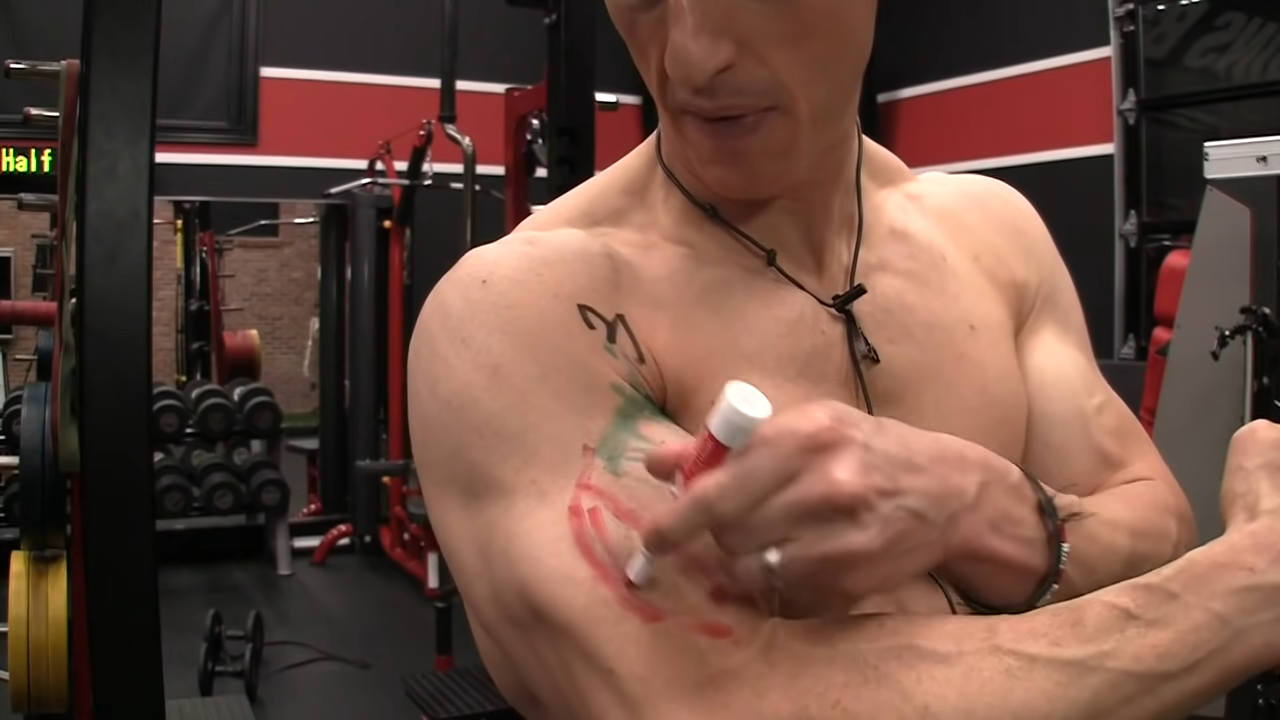
Though the brachialis isn’t traditionally categorized as a bicep muscle, targeting it is crucial for those seeking bigger biceps.
Nestled underneath the biceps brachii, the brachialis is a muscle that stretches from the lower part of the upper arm to the elbow. Its positioning between the biceps and the triceps gives it a pivotal role in the overall contour of the arm.
The brachialis has some key roles when it comes to arm movement. It is a major muscle responsible for bending the elbow and is even more specialized in this action than the biceps.
This means that whenever you bend your arm, the brachialis is actively involved, no matter how your hand or forearm is positioned.
It also helps to stabilize the elbow joint during various forearm activities, ensuring movements are smooth and coordinated.
FOREARMS
The forearm muscles, while not the central focus of this high-intensity, challenging workout, will undoubtedly be engaged during exercises such as the Hammer Curl.
When it comes to arm development, biceps and triceps often steal the spotlight.
However, the forearms, those intricate bundles of muscle stretching from the elbow to the wrist, take the brunt during day-to-day movements and strenuous exercises.
The main functions of the forearm muscles are:
- Grip Strength: Whether you’re doing heavy lifting or light weights, carrying groceries, or simply shaking someone’s hand, your grip strength is predominantly determined by your forearm muscles.
- Wrist Movement: Every time you type, write, or wave, you’re using your forearm muscles to move your wrists.
- Finger Dexterity: Fine motor skills, like buttoning a shirt or playing a musical instrument, owe a lot to the nuanced movements controlled by the forearms.
The Barbell Wrist Curl is a classic forearm muscles exercise.
BACK AND BICEPS WORKOUT
Now that you know which major muscles we’re targeting, we can jump into the entire workout.
You can add this back and biceps workout to your current training program assuming you’re giving equal attention to the other muscle groups.
If you’re happy with your routine, consider using this to try something new for a month before going back to your original workout.
Whether you’re doing a Push-Pull workout split, a PPL, or a total body workout split for muscle gain, be sure to focus on the pairing of muscles that work together synergistically.
Also, I want you to forget about ego lifting here. Instead, focus on training intensity. That might mean you need to use a lighter weight, different curl variations, etc.
That’s okay! Focus on moving through each exercise, moving the bar with control. You’ll work your way up in weight in time.
With that said, here are my upper body exercises for this back and biceps workout session.
SINGLE ARM DUMBBELL ROW

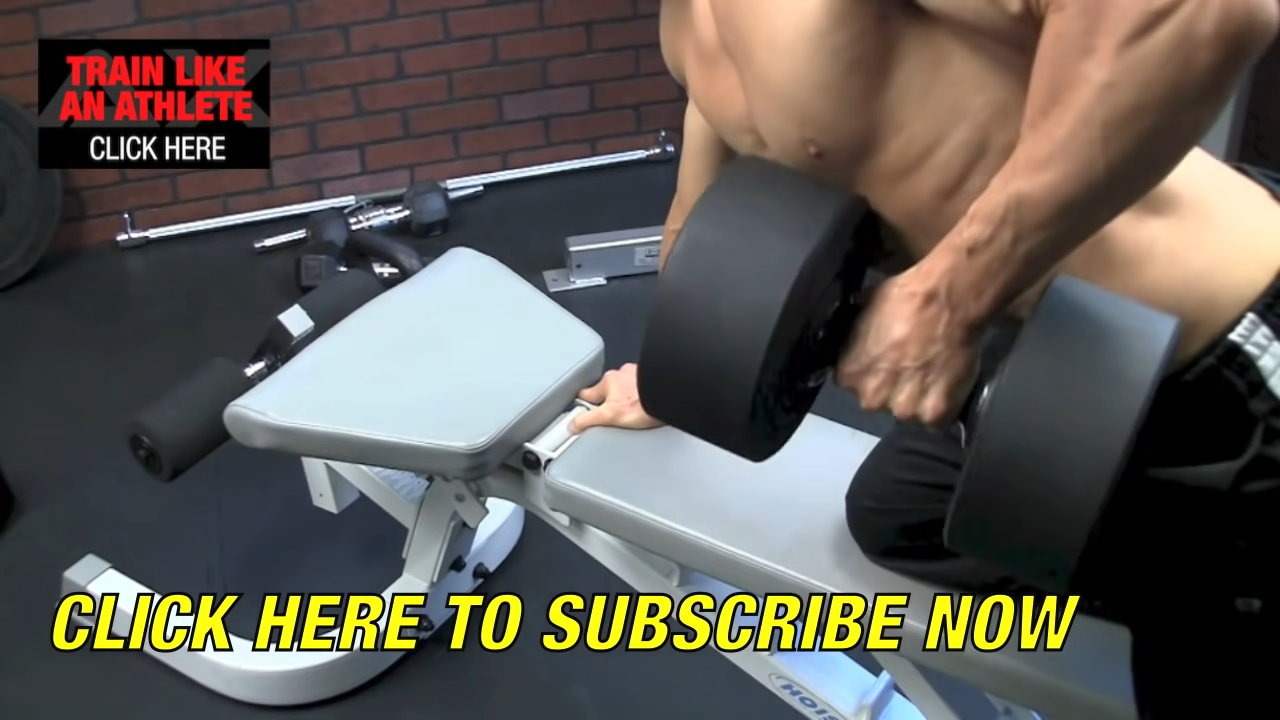
HOW TO DO THE SINGLE ARM DUMBBELL ROW:
- Select a lighter weight dumbbell. Eventually work up to a challenging weight. Position yourself beside a weight bench or a long stable surface, adopting a hinged stance. Stand with your feet spread shoulder-width apart.
- Rest your left hand on the top of the bench and position your left knee near the bottom. Ensure your stance is extended so your right foot doesn’t block the dumbbell’s path during the lift.
- Grasp the dumbbell with a neutral grip (palm facing inwards) letting it dangle below your shoulder. With proper form, activate your core, tilt your chest upwards and elevate your hips, ensuring your back remains neutral.
- Initiate the row by pulling the dumbbell upwards, with your elbow leading and extending past your upper torso, targeting the lats.
- At the peak, contract the lats, then gradually revert to the initial position, emphasizing arm extension to optimize time under tension.
- If you don’t have access to a pair of dumbbells, a great alternative exercise would be the Resistance Band Row.
WHAT MAKES IT EFFECTIVE: The Single Dumbbell Row exercise ensures that you get even muscle contraction in both sides of your back, helping prevent uneven muscle strength. Plus, if you engage your core correctly during this challenging exercise, you not only protect your spine but also strengthen your core muscles. The same technique pointers can be used for other exercise variations, such as the Bent-Over Barbell Row.
WEIGHTED PULL-UPS


HOW TO DO THE WEIGHTED PULLUP:
- To begin, you’ll use a weight belt with plates, a weighted vest, or even a dumbbell clenched between your feet. Start by positioning yourself beneath the pull-up bar and gripping it just beyond shoulder-width, with your palms facing forward in an overhand grip.
- Before initiating the movement, activate your core to offer stability and stop unwanted swinging.
- As you inhale, engage in the pull-up using scapular retraction and direct your elbows downward and to your sides, keeping the core tight.
- Aim to lift until your chin surpasses the bar’s level, all the while maintaining a straight body posture without relying on momentum.
- During the descent, emphasize muscle control, gradually returning to the starting position with arms fully extended.
- Alternative back exercises for beginners would mainly focus on removing the added weight and mastering a clean form with body weight first. In other words, if you have to choose between heavy pull-ups or 50 pull-ups as a beginner, I’d say go with the latter and then switch over to the heavy weight.
WHAT MAKES IT EFFECTIVE: Weighted Pull-Ups are a fantastic lat exercise, highly effective for targeting the back muscles primarily because they are a type of compound movements. This ensures that multiple muscle groups in the back are worked simultaneously. Moreover, the added weight intensifies muscle activation, leading to greater muscle growth and functional strength.
BENT-OVER BARBELL ROWS

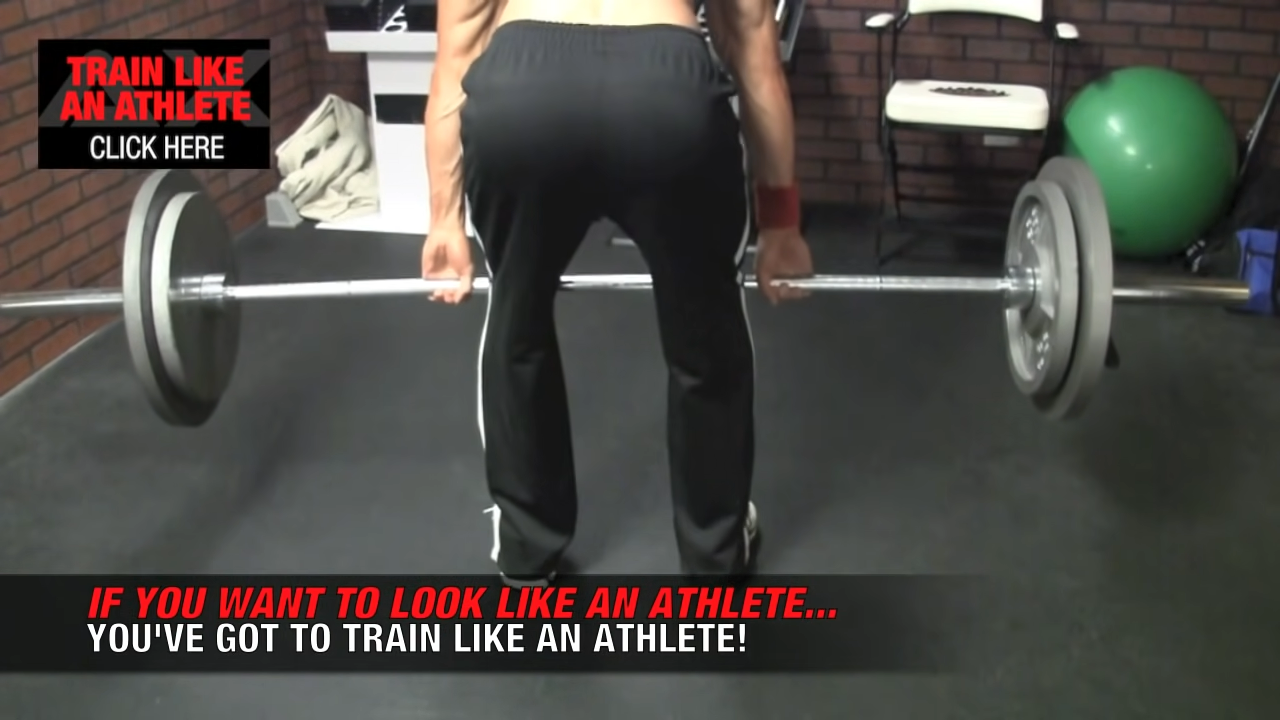
HOW TO DO BENT OVER BARBELL ROWS:
- For this compound exercise, position yourself with feet shoulder-width apart, grasping a barbell with a pronated grip with hands outside shoulder width.
- From a standing position, hinge forward from the hips while slightly bending the knees, ensuring your back remains straight and nearly parallel to the floor. Let the barbell hang naturally in front with arms outstretched.
- As you initiate the row, breathe in, and draw your elbows upwards and slightly backward, keeping them snug to your sides. Visualize squeezing your shoulder blades together as the barbell approaches your lower rib cage.
- It’s crucial to maintain a stable torso throughout, resisting the urge to generate momentum by rocking.
- After a brief pause at the peak of the row, exhale and gradually lower the bar with control to the starting position.
- While it might be possible to lift heavier loads, I’d recommend a few warm-up sets with lighter weights before progressing to heavy loads.
WHAT MAKES IT EFFECTIVE: The Bent-Over Rows stance not only emphasizes the target back muscles but also requires significant core engagement. This dual action during the Barbell Row not only strengthens the back but also fortifies the core, promoting overall stability and functional strength. Overall, bent-over rows are an amazing exercise for back and biceps.
WEIGHTED SINGLE-ARM ROWS WITH EXTENSION

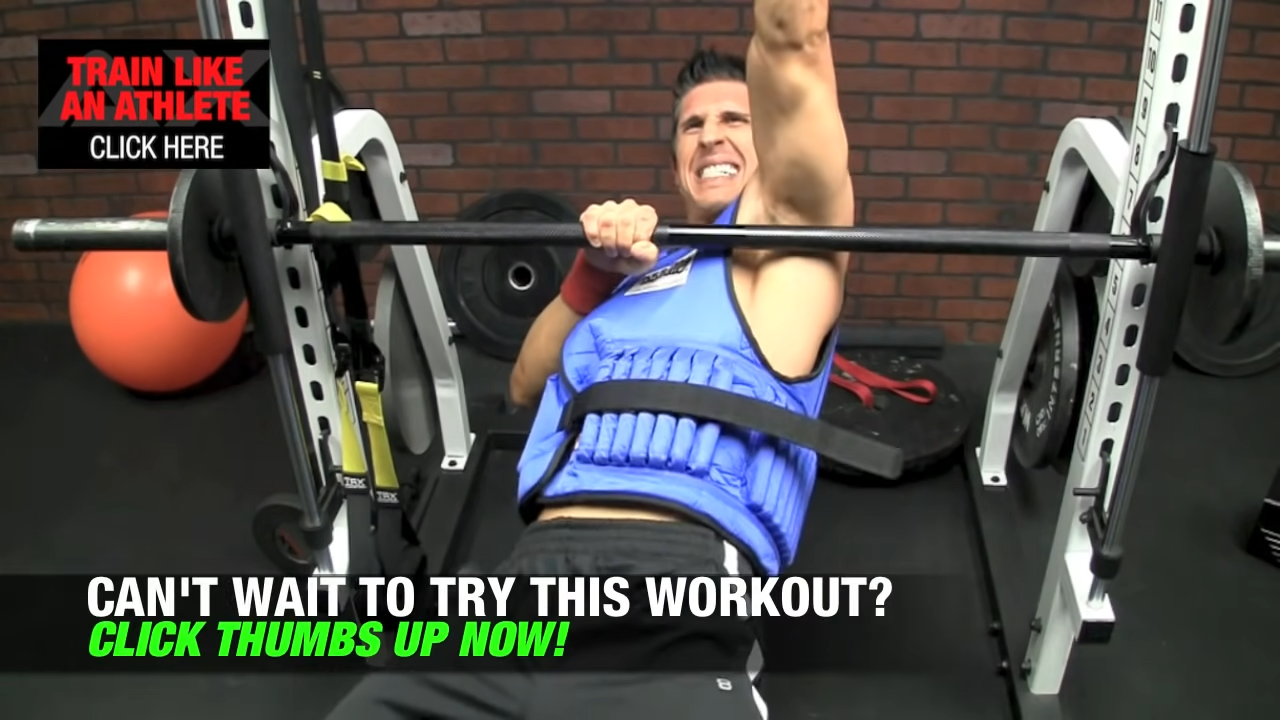
HOW TO DO WEIGHTED SINGLE ARM ROWS WITH EXTENSION:
- Set up a Smith machine so that you can lie down beneath it and reach up comfortably. Wear a weighted vest for additional weight.
- Extend your right arm above, grabbing the bar with an overhand grip.
- Contracting the back muscles, bring yourself up and reach above with your left arm.
- With complete control, slowly lower yourself back to the starting position.
- Repeat on the other side and keep your form strict throughout.
WHAT MAKES IT EFFECTIVE: This unilateral exercise is excellent for ensuring that both sides of the body are getting an equally effective workout.
BARBELL CURLS

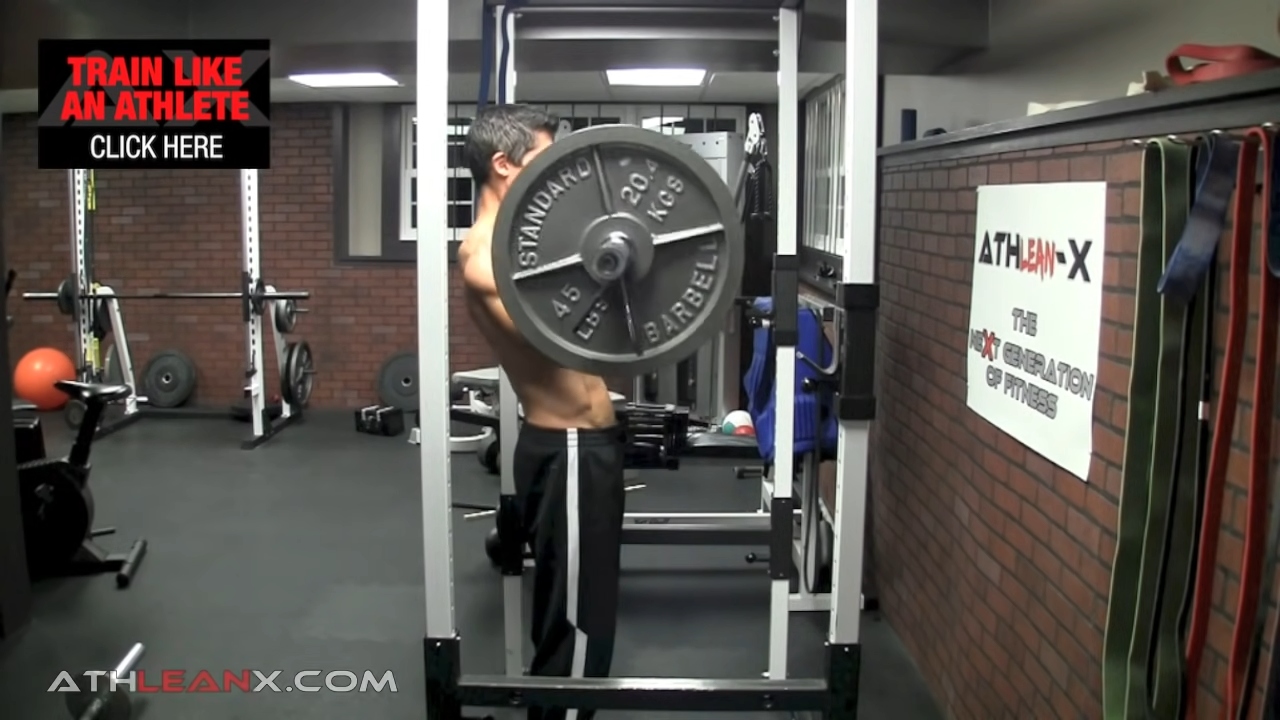
HOW TO DO BARBELL CURLS:
- For these biceps curls, start with feet hip-width apart, holding a barbell with an underhand grip (palms facing upwards) with hands about shoulder width or slightly wider. Ensure your elbows are against your torso and remain stationary throughout the movement.
- From this starting position, while keeping your upper arms still, exhale and curl the barbell upwards by contracting your biceps.
- Continue the curl until the barbell is at shoulder level, achieving maximum contraction of the biceps at the top of the movement.
- After holding the contraction briefly, inhale and slowly lower the barbell back to the starting position in a controlled manner, fully extending the arms and stretching the biceps.
- You can also use a cable machine for this challenging exercise by using the barbell cable attachment. If all you have is a pair of dumbbells, you can place them together to perform Dumbbells Curls with the same proper form.
WHAT MAKES IT EFFECTIVE: Isolation exercises like the Barbell Curl are especially effective for bicep development because they engage both main parts of the biceps, ensuring balanced growth. The ability to add weight to the barbell during this biceps isolation exercise allows users to continually challenge their muscles, promoting increased strength and size.
ECCENTRIC-FOCUSED CURLS WITH A WEIGHT VEST

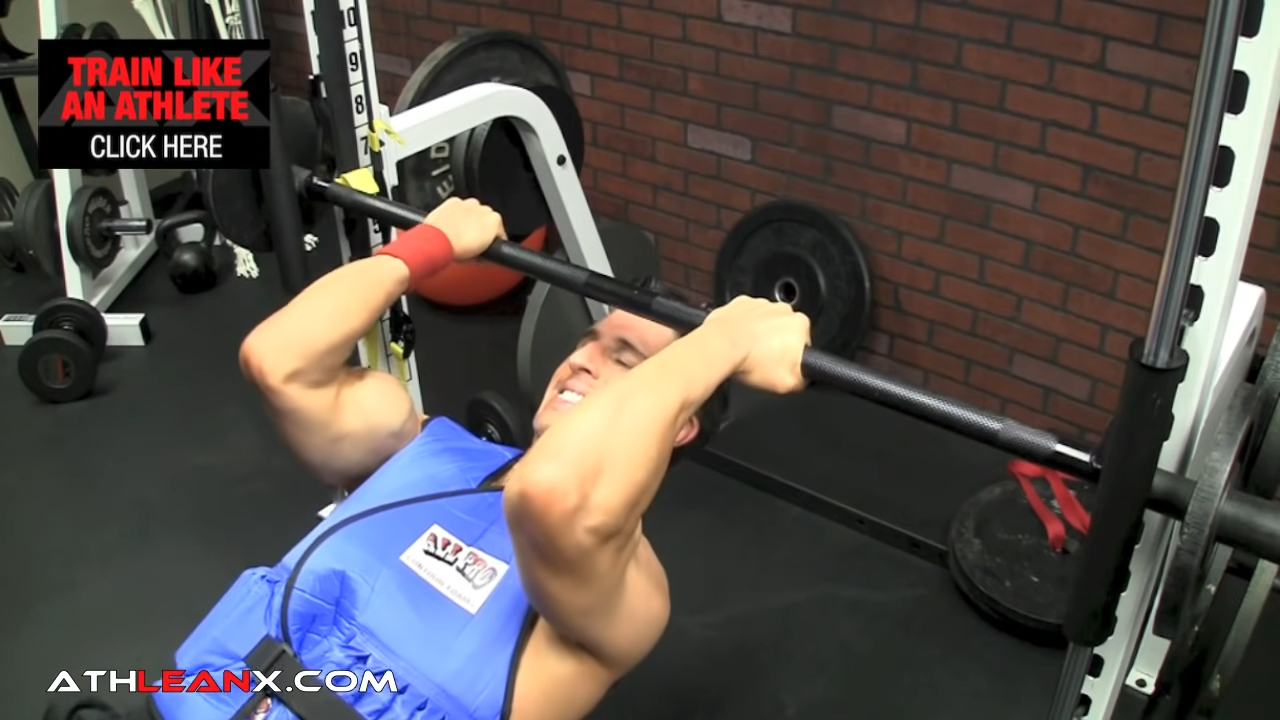
HOW TO DO ECCENTRIC FOCUSED CURLS WITH A WEIGHTED VEST:
- With your feet flat on the floor, position yourself beneath a Smith machine, wearing a weighted vest for additional weight.
- Reach out with both hands, moving your underhand grip at or slightly outside of shoulder width – depending on your frame. Extend your feet out, feet about hip width apart and tighten your core.
- Now, instead of pulling yourself up using your back muscles – like you would during a Lying Pull-Up – focus on the curling movement in your arms, engaging the biceps to pull yourself up.
- Pause at the top to contract the biceps and slowly lower yourself to the starting position where you’ll feel an intense stretch.
- Maintain core stability throughout the these biceps curls.
WHAT MAKES IT EFFECTIVE: You can think of this as similar to an Incline Dumbbell Curl. Alternative biceps exercises like this are effective because they force the muscle to contract and move through a full range of motion in order to get through the movement.
BARBELL CURL THROWS

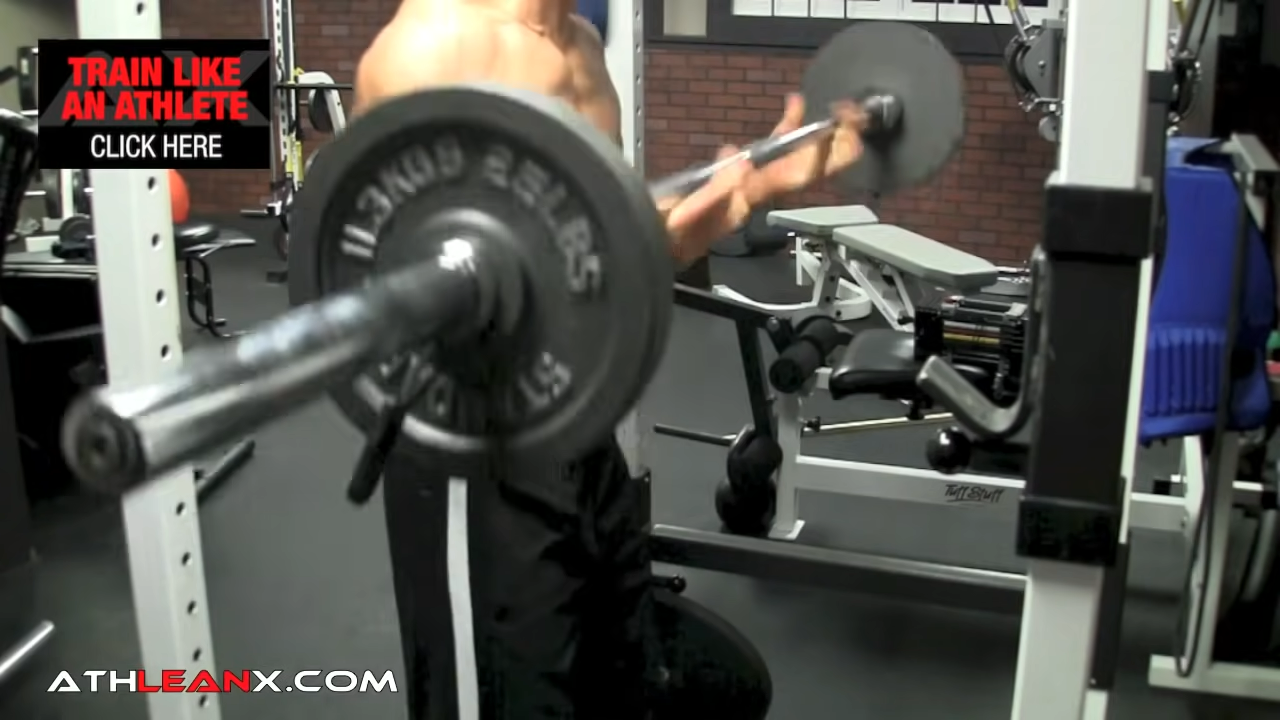
HOW TO DO BARBELL CURL THROWS:
- Use the same form as for a Barbell Curl, but at the top of the movement toss the weight up.
- Catch the bar and slowly bring it back down to the starting position with control.
WHAT MAKES IT EFFECTIVE: This is an explosive movement that targets both heads of the biceps muscle. It’s great for muscle mass, strength, and raw power output.
Back and biceps are a classic muscle pairing combination because they complement each other.
That doesn’t mean you need to design your workout as a Bro Split.
Rather, you should be asking, “Which muscle groups work best together for my goals?”
If you don’t have a full workout, we’re here to help with that! Whether you’re looking for beginner workouts or advanced workouts, check out our Program Selector to help you find the best program for your needs and training experience. Advanced lifters will a long list of training programs to meet their goals.

- Training your back and biceps muscles together makes complete sense from a synergistic point of view – In other words, these muscles help one another to function.
- You should train muscles together that complement one another, but that doesn’t mean you need to follow a Bro Split.
- Here are my exercise choices for a great back and biceps routine:
- Single-Arm Dumbbell Row: While hinged at a flat bench with one hand resting on it, hold a dumbbell in the opposite hand and row it upwards, maintaining a back neutral position.
- Weighted Pull-Ups: Depending on your ability, add heavy weight or lighter weights. Grip a pull-up bar beyond shoulder-width, activate your core, and pull up until your chin surpasses the bar, maintaining posture.
- Bent-Over Barbell Row: Holding a barbell with feet shoulder-width apart, hinge forward with a straight back and row the barbell towards your lower rib cage.
- Weighted Single-Arm Rows with Extension: Beneath a Smith machine, grab the bar with one arm and pull up, switching arms after each rep.
- Barbell Curls: With feet hip-width apart, hold a barbell with palms up, and curl it while keeping your elbows stationary.
- Eccentric-Focused Curls with a Weight Vest: Under a Smith machine, grip the bar and pull up using biceps, then lower slowly.
- Barbell Curl Throws: Perform a Barbell Curl and toss the weight at the top, then catch and lower with control.
BACK AND BICEPS WORKOUT FAQS
Yes, it is common to pair back and bicep exercises together in a workout because they work together synergistically. Many back exercises, like Dumbbell Rows or Pull-Ups, also engage the biceps. Therefore, by training them together using upper body movements, you can maximize the efficiency of your workout. Shoot for 5-7 exercises per workout. Be sure to allow a couple of rest days between sessions to allow for muscle recovery. Over a period of time of 1-3 months, you'll start to notice a difference in the strength and size of your upper body.
The number of sets and reps largely depends on your fitness goals (e.g., muscle mass vs. strength). In general, here are some recommendations for training volume:
- For Building Strength: an excellent rep range would 3-5 sets of 1-6 repetitions
- For Muscle Hypertrophy (Muscle Growth): 3-5 sets of 6-12 repetitions
- For Endurance: 2-3 sets of 12-20 repetitions
Remember, it's essential to adjust the load accordingly. For example, for strength, you'd typically use heavier weights than for endurance. Don’t forget about taking proper rest periods as well.
How often you should train back and biceps depends on your fitness goals and what you want to achieve. At the minimum, you should be training your back and bicep muscles once per week. Most people find that training a muscle group twice per week with progressive overload techniques allows for adequate recovery, especially if you're splitting up your muscle groups throughout the week.
In theory, you can hit biceps before back, but I’d ask what your goals are here. Why would you want to work a smaller muscle group before a larger muscle group? In most cases, I’d tell you to work on the larger muscle groups before moving to smaller ones. If you exhaust your biceps before doing your back exercises, you might not have enough strength left in your biceps to properly engage in compound back exercises like Single-Arm Lat Pulldowns on a lat pulldown machine or Cable Pulley Machine Pull-Ups.
This depends on how your workouts are broken down. More often than not, you’re going to want to pair the back with the biceps. However, it's also common to see biceps paired with triceps for an arms-focused day. Another option is to incorporate a full "pull" day which involves working out the back, biceps, and rear deltoids (posterior deltoids) together. This can be done as part of a PPL 3 or 6 day training split.
REFERENCES

Jeff Cavaliere M.S.P.T, CSCS
Jeff Cavaliere is a Physical Therapist, Strength Coach and creator of the ATHLEAN-X Training Programs and ATHLEAN-Rx Supplements. He has a Masters in Physical Therapy (MSPT) and has worked as Head Physical Therapist for the New York Mets, as well as training many elite professional athletes in Major League Baseball, NFL, MMA and professional wrestling. His programs produce “next level” achievements in muscle size, strength and performance for professional athletes and anyone looking to build a muscular athletic physique.

















